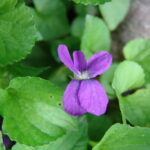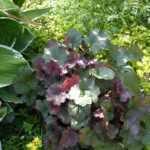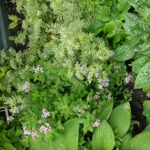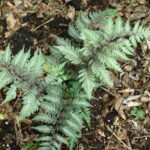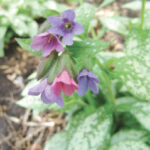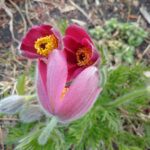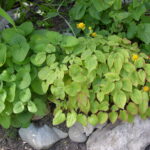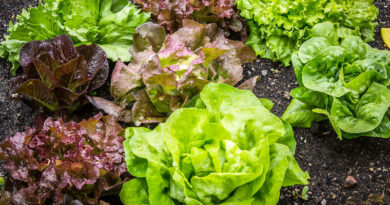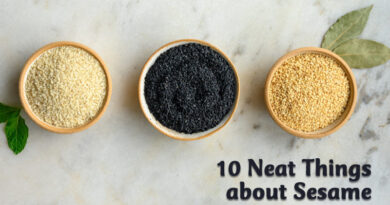Shade Plants: A rewarding plant of the spring garden
Story & photos by Dorothy Dobbie
In my garden, under the shade of a young green ash, a garden is taking shape. There is room here for hostas which are still young and tender. Not yet fully grown, their leaves will not yet overlap as they will one day when the garden matures. Here are some ideas for plants for shade gardens.
Hostas emerge late in the spring garden and before they do, I plan to have a stunning display of daffodils, blue grape hyacinth and clumps of early tulips, all of which will be pretty much finished by the time the leaves come out on the tree above. When that happens and shade creeps into the garden, the miracle that is Jacob’s ladder (especially the cream and green variegated one) will unfold its strings of pearl-drop flowers and the shy little wood violets will be revealing their dainty blue flowers.
In front of the hostas, pretty little heuchera, what we used to call coral bells before they got so fancy, will rest in tidy mounds, the orange hues of ‘Marmalade’, contrasting with the brilliant greens of ‘Lime Rickey’ and the deep purple of ‘Plum Pudding’, while the silver veins of ‘Pewter Moon’ will show nicely against its spires of coral bells. ‘Purple Palace’, more bronze than purple, has maple-shaped leaves and self-seeds in the garden so be careful not to let it take over.
To offer some delicate relief to the bulk of the hostas, the red stems of three maidenhair ferns support delicate fronds. Lower and leatherier is the deep green of the deer fern, beside which preens a silver and purple Japanese fern.
At the outermost edge, where the soil is damp year round, early blooming primula, the regular store-bought variety of early spring, grow happily as soon as the snow melts. They thrive in this cool, wet spot, and after they finish blooming, the broad crinkly leaves hug the ground. The wonderful thing about primula is that the mounds spread a little wider each year creating more masses of cheery, fresh-looking flowers for many weeks.
Ajuga is a happy denizen of this peaceful place. It’s also called bugleweed and is sometimes known as carpenter weed because its juice is said to stem the bleeding from self-inflicted wounds of those who work with wood. This ground hugger carpets a shady area over time, sending up welcome spikes of blue in the spring. I like the bronze foliage of the one called ‘Chocolate Chips’.
Browallia, one of the prettiest shade annuals, grows in small shrubby green mounds and is covered with blue to mauve or even white, five-petalled flowers that persist for months. This is an underused annual that can add a great deal of life to a midsummer shade garden.
Don’t forget all the wonderful Pulmonaria or lungworts, with their silver-speckled leaves, that give us an early gift of blue, white or pink flowers, then reward us all the rest of the year with their light-emitting foliage. Be sure to deadhead the flowers once the blooms have faded as the leaves attached to the flowering stem will turn brown and raggedy looking. Pull the flower stem right out.
This is just a tiny list of all the amazing plants that will delight you with their character and subtle brilliance in the shade garden.
Shade gardens act like balm for the harried heart. The muted hues of coloured leaves and the subtle shades of green cool the eye and let it see the brilliance of the sunlit parts of the garden more clearly.
Don’t despair over that un-sunlit space – build a shade garden and get ready to marvel. It may become your favourite place in the garden.





